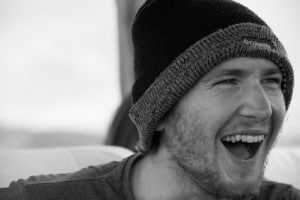When travelling, water, or more importantly our access to it, is one of the most important things on most people’s minds. Keeping hydrated prevents such a list of ailments and problems I don’t have space to name them all! However, I cannot stress enough how drinking dirty, untreated water, can have similarly damaging results (guardia, cholera are just two nasties out there).
Drinking untreated tap water pretty much anywhere is a no, no. So what are the other options?
1) Buy bottled water every day, everywhere.
Pros: Guaranteed 100% clean water.
Cons: Awful for the environment and it gets very expensive to constantly buy water.
Overall: The easy option for the lazy (and rich!) traveller. Respect your environment and look for better options. 5/10
2) Chlorine Dioxide Tablets- 1 tablet per litre, 30 minutes purification*
Pros: Cleans your water after a relatively short period of time (30 minutes). It is possible to find some pretty cheap chlorine tabs.
Cons: If you don’t like drinking swimming pool water… you are going to be getting grumpy. While 30 minutes doesn’t seem long, staring at your water bottle waiting for it to purify when we are really thirsty is a massive pain.
Overall: This option is standard practice for many hikers and world wanderers. You can buy neutralisers to stop the nasty taste which makes this option, so long as you are well organised to purify enough water for when you are really thirsty, a great option. 8/10.
2) Bleach- 2 drops per litre, 30 minutes purification.
Pros: Bleach can be found everywhere, in every town and village. 2 drops will do the job. Very cheap to buy and one small bottle could last you months and months.
Cons: You are drinking bleachy water which can cause some nasty long-term health problems. If you don’t wait for the chlorine to evaporate off your water, you will get a horrible taste of bleach. Also, it can sometimes be very difficult to put exactly 2 droplets of bleach into your litre of water.
Overall: It does the job and is practical. However it just sounds wrong to be drinking bleachy water. 4/10.
4) Iodine- 4 drops per litre, 30 minutes purification.
Pros: All the same advantages as using bleach. Very cheap to buy and easily found.
Cons: Same problems with using bleach, except that Iodine doesn’t actually kill a lot of ???? however dangerous bacteria have no hope against bacteria.
Overall: Banned in the United States of America and not actually killing a lot of the nasties, this should only be used as a last resort: 3/10.
5) UV Light Purification Stick- no chemicals, 30 seconds per litre.*
Pros: This is the current king of traveller and hiker water purification. 99.9% cleans your water meaning you can take water from streams, taps and lakes without any worry. The speed in which you purify your water means you can make a lot of friends by offering it around too.
Cons: This can be a very expensive piece of kit. Sometimes, it can be difficult to get the stick into some of the more narrow-necked water bottles- however if you have the money to buy a decent UV light stick, you should definitely remember to check that your bottle is wide-necked.
Overall: This method is the most practical and safest form of water purification, with them becoming more common, the price will hopefully become more affordable soon. 9/10.
There are many options for water purification. The key thing is to make sure that you have something, even bleach (yuk!). In my personal opinion, if you are looking to spend some money on one piece of kit this year, you have to investigate the UV light options- this device has recently become as important to me as my sleeping bag, hiking shoes and trekking bag (my top three most important pieces of kit).
*these times are estimated as each product varies within these categories- make sure you always read the instructions of your water purification to ensure you are only drinking clean, purified water.
 Author Bio: Matty is a charity project manager and expedition leader for Quest Overseas in Peru and Bolivia. Graduate from University College London, BA History. Currently residing in Colombia and always looking for new adventures to lead his teams on.
Author Bio: Matty is a charity project manager and expedition leader for Quest Overseas in Peru and Bolivia. Graduate from University College London, BA History. Currently residing in Colombia and always looking for new adventures to lead his teams on.

